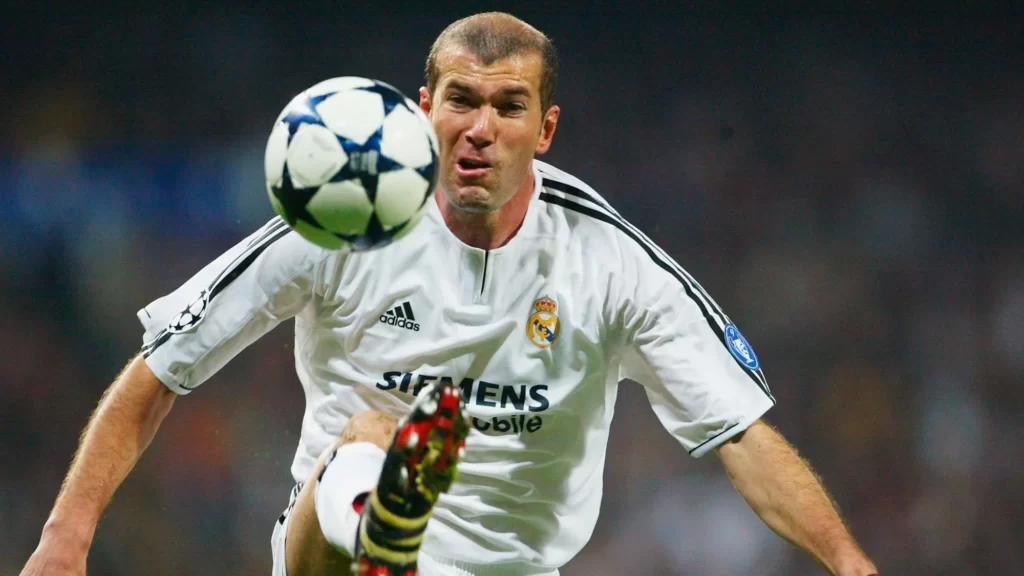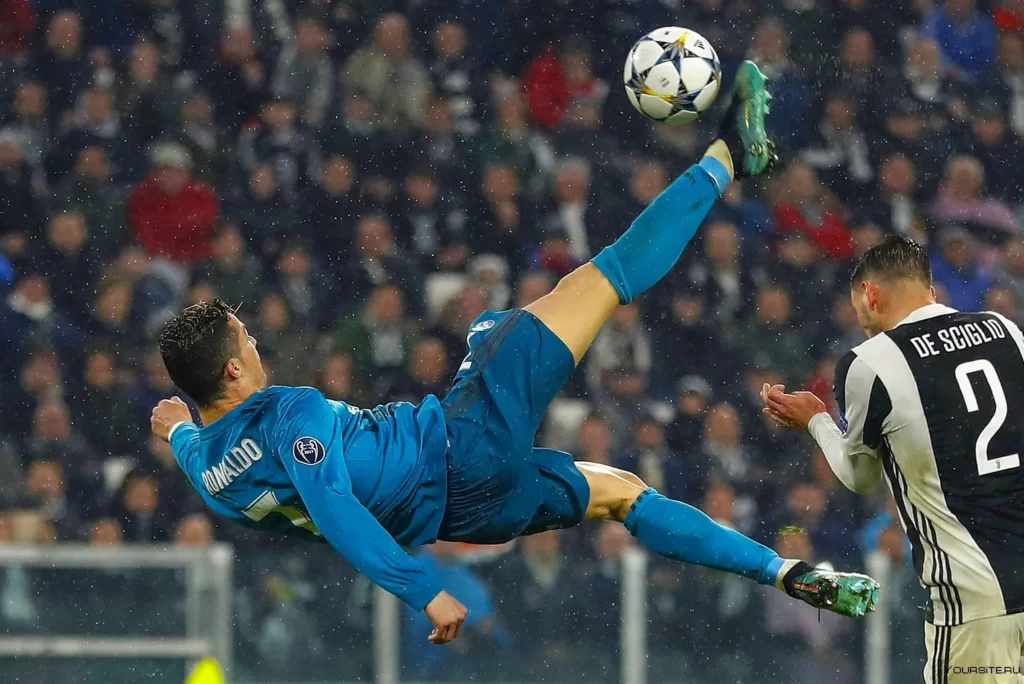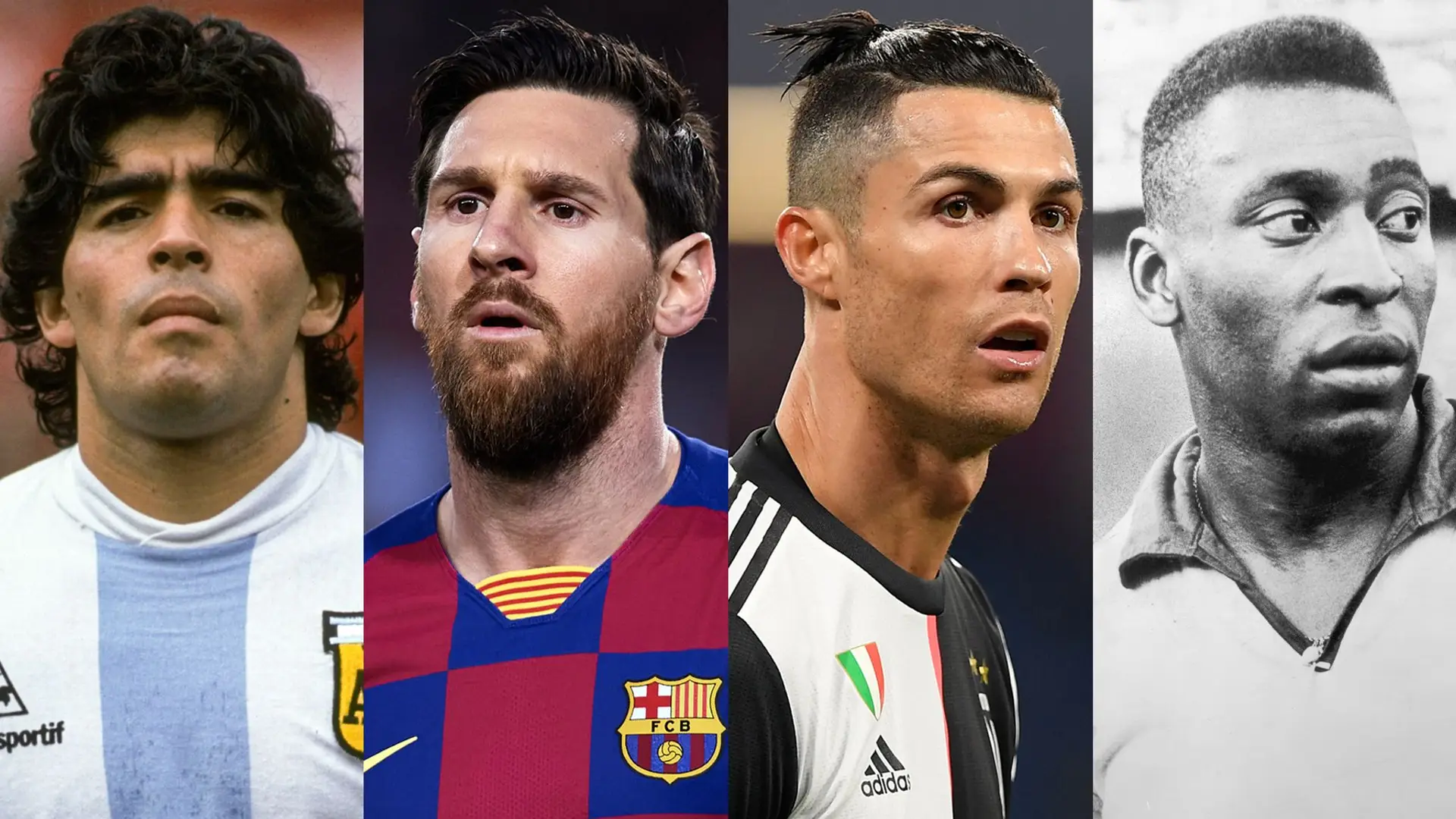The most beautiful goals are the moments in football that burn themselves into the hearts of fans forever and make them swoon with joy and excitement. Each of them becomes a part of world culture. Today we want to remember the moments that have become legendary. Let’s talk about the goals that not only impressed the public, but also changed the perception of football.
Maradonna and the ‘Hand of God’: an incredible goal and its consequences
In 1986, in the quarter-finals of the World Cup in Mexico, Diego Maradona scored one of the most talked-about miracles in the history of football – the legendary goal known as the ‘Hand of God’. The match between Argentina and England took place against the backdrop of the Falklands War, which made the encounter particularly explosive. Maradona’s goal was not only a sporting achievement, but also a symbol of victory for the Argentinian people. Many believed in ‘divine intervention’.

Fan agitation and impact on history
After the goal, the world was divided into two camps. Some saw it as an act of desperate genius, others as a blatant offence against sporting morality. But regardless of how you felt about the goal, it was included in the list of the best goals in football history because it changed the course of the game and gave Argentina the victory. Fans around the world marvelled at Maradona’s skill and ingenuity, even if they condemned his actions. The greatness of this moment lies in its contradictory nature – the goal provoked both jubilation and outrage.
Tactics
Maradona not only demonstrated physical agility, but also a unique understanding of the moment of the game. He managed to utilise his position perfectly to exploit the opponent’s weakness.
David Beckham and the goal from the centre of the pitch: distance solved everything
For any footballer, a shot from the centre of the pitch is more than just an attempt to score. It is an act of courage and self-confidence. In 1996, David Beckham, playing for Manchester United, proved that determination and skill can change the course of events. When he saw that the opposing goalkeeper was too far away from the goal, Beckham took a shot from more than 50 metres. The goal was recognised as one of the best in football, showing that distance can decide the outcome of the game if the player is confident.
Phenomenal technique
Beckham was able to handle the ball in a way that few others can. Every element was executed perfectly: Angle, power and accuracy. It was these factors that made the shot from the centre of the pitch so spectacular. The ability to keep the ball under control from such a distance and still hit the target accurately is an example of skill at the highest level.
Fans’ emotions and the team’s reaction
When the ball crossed the goal line, the stadium erupted in applause. The fans in the stands realised that they had witnessed a unique event. The goal was one of the most unusual in football. The reaction of Beckham and his team was emotional and sincere, and showed that even the most experienced players cannot contain their enthusiasm in such situations.
Zinedine Zidane: A great moment
 The 2002 Champions League final between Real Madrid and Bayer Leverkusen was memorable not only because of the thrilling game, but also because of Zinedine Zidane’s outstanding shot on goal. This moment was the real gem of the final, when Zidane, standing on the edge of the penalty area, received the ball and fired it powerfully straight into the net. It was one of the most beautiful goals of the game and showed how important technique and intuition are in football.
The 2002 Champions League final between Real Madrid and Bayer Leverkusen was memorable not only because of the thrilling game, but also because of Zinedine Zidane’s outstanding shot on goal. This moment was the real gem of the final, when Zidane, standing on the edge of the penalty area, received the ball and fired it powerfully straight into the net. It was one of the most beautiful goals of the game and showed how important technique and intuition are in football.
Technique and skill in one moment
Zidane calculated the moment and angle of the shot perfectly. The difficulty was that the ball was flying high and it required exceptional coordination to hit it accurately. Goals with such precision are rare, and this image continues to inspire young footballers around the world.
Reaction from experts and fans
Football experts and fans from different countries immediately recognised the shot as the most beautiful goal in football. Fans remember this moment as one of the most spectacular in the history of the Champions League because Zidane showed how great football is when skill and art are combined in one movement.
Ronaldinho and total improvisation
Barcelona’s game against Chelsea in the Champions League was a real contest as Ronaldinho showed an incredible shooting technique that is impossible to replicate. He took the ball, made a few feints and shot it, seemingly completely improvised, right into the corner of the goal. Another brilliant moment was added to the list of the best goals in football.
Technical kick and footwork
Ronaldinho’s kick was something that could not have been predicted. The athlete managed to change the tempo of the game by bringing the Chelsea defenders to a standstill. Dropped goals like this are rarely so precise and effective. Ronaldinho’s footwork, ball control and timing were truly masterful.
Fans’ reaction and significance for Ronaldinho’s career
Barcelona fans literally jumped for joy as the ball flew into the net. The goal became the footballer’s calling card, a symbol of his uniqueness and unpredictability. This moment will go down in history as one of the most creative and inspiring.
In 2013, Cristiano Ronaldo scored one of the most impressive goals when Real met Juventus. In that moment, the footballer literally hovered over the defenders and showed incredible strength and coordination. This is the best headed goal in football, emphasising Ronaldo’s athleticism and unique skills.
Physical fitness and jumping technique
Ronaldo not only jumped high, he also showed perfect technique. His jump reached a height of 2.56 metres, which is comparable to that of a professional basketball player. This result was only possible thanks to intensive training and special attention to physical preparation.
Reaction from experts and fans
The result caused quite a stir among experts and fans. Experts noted Ronaldo’s phenomenal physical form and his ability to give his best in the decisive moments of football.

Conclusion
 The best goals in football – stories of courage, inspiration and the boundless talent of athletes who change the game and make spectators fall in love with football again and again. The highlights unite millions of fans around the world and become an integral part of our shared football history.
The best goals in football – stories of courage, inspiration and the boundless talent of athletes who change the game and make spectators fall in love with football again and again. The highlights unite millions of fans around the world and become an integral part of our shared football history.
 en
en  de
de  ar
ar  es
es  nl
nl  hi
hi  fr
fr  it
it  pt
pt  el
el 










